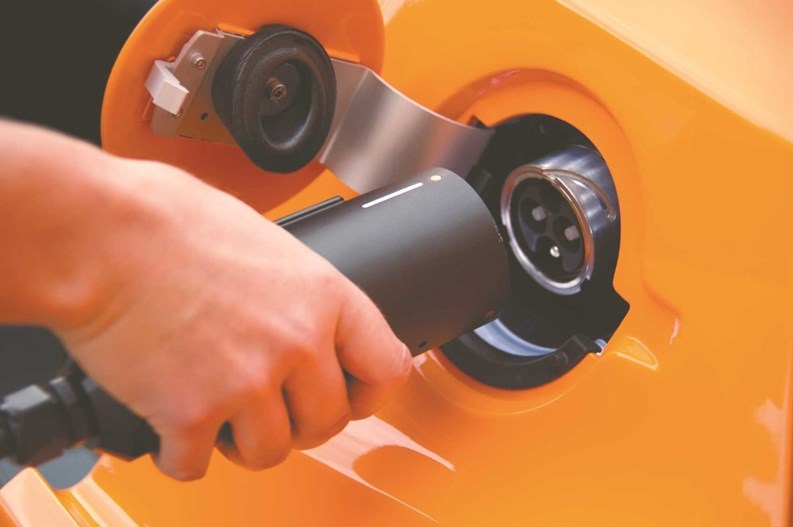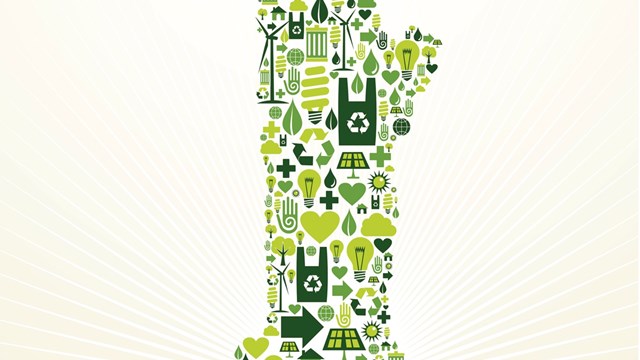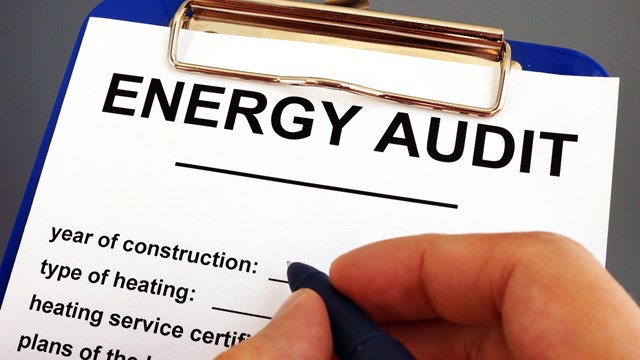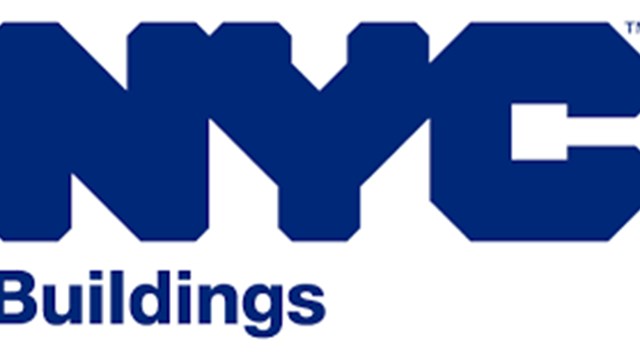It many circles it’s considered socially or politically correct to “go green” when embarking on new construction projects or updating an existing property. Cost-saving initiatives include solar roofs, energy-efficient lighting and appliances. With these inherent benefits, boards and managing agents are expressing interest in all things green, which is in line with New York’s celebrated sustainable reputation.
In January 2013, the United States Green Building Council (USGBC) announced that New York was ranked seventh in the nation in new Leadership in Energy and Environmental Design (LEED) certifications in 2012, moving three spots up from its No. 10 spot in 2011. The annual study ranks states based on the amount of LEED-certified space per capita. With 34.4 million square feet of LEED-certified space, New York certified 1.77 square feet per resident.
The State of the Industry
While the ripples from the recent recession are still being realized in many industries, green building was a subset of the construction industry that sustained the least fallout. It is true from 2008 to 2010 there was a grounding of related projects, but in the last few years a steady increase of job orders is being filled. For example, IBISWorld released a report last year, “Sustainable Building Material Manufacturing in the US,” which projected an average sector growth of 7.3 percent per year over the next five years.
Precision Paragon, a commercial lighting manufacturer, also released a report last year finding that the energy-efficient lighting market experienced steady growth in 2012. It is predicted that LED-based illumination lighting will make up five percent of the indoor lighting market within the next three years. This growth is due, in part, to governmental regulations.
The Energy Independence and Security Act of 2007 requires a 25 percent increase in the energy efficiency of light bulbs, which places a stranglehold on those manufacturers that are unable to increase incandescent bulb efficiency by such a large percentage. As of January 2012, 100-watt incandescent light bulbs that fail to meet the new efficiency standard are prohibited. This January, the law was modified to include 75-watt bulbs. Next January, 60-watt and 40-watt incandescent bulbs will also be subject to this law.
In addition, local regulations such as the ones in New York City’s Greener, Greater Buildings Plan (GGBP), have pushed the real estate market into a more environmentally-friendly direction.
“There are a number of different requirements that New York City is instituting to help buildings, including various local laws, such as Local Law 84 and Local Law 87, to monitor and benchmark their energy use against a baseline measurement,” Peter B. Zlotnick, a partner at the law firm of Kagan Lubic Lepper Finkelstein & Gold, LLP, who specializes in green building and renewal energy, says. “That helps to improve how the electricity, the water usage and gas usage is done in buildings. In the long term, it will help enhance the value of the properties as well, because if you can operate a building at less cost, then there will be more capital available for the unit owners to put towards other types of amenities, such as enhancing the interior space of the buildings or adding other luxury items such as concierge services and the like. But it’s really a use of resources and cost savings.”
Get with the Green Program
New York City is lauded as a hub for innovation, and when it comes to new trends in real estate, the Big Apple is at the forefront. The Albanese Organization, a real estate firm based in Garden City, set the standard for the eco-friendly multi-family building trend in 2003 with the development of The Solaire, the nation’s first LEED Gold-certified residential building, which was soon followed by The Visionaire, The Vanguard Chelsea and The Verdesian. Ten years later, the demand for green amenities is at an all-time high.
“The green amenities movement has been driven by the market,” says Michael Gubbins, the vice president of Residential Property Management for the Albanese Organization, Inc. “But it’s also been driven by managing companies, property management companies, property managers and the operators of these buildings, most of them are with Local 32BJ. It has been very proactive over the last years in the education of resident managers, superintendents and the support staff. They created the program called 1,000 Green Supers. It’s a program that is educational and also gives resident managers and superintendents the tools to implement environmentally and energy-efficient programs in their buildings.”
The 1,000 Green Superintendents program, which is part of SEIU Local 32BJ’s Thomas Shortman training fund, is a collaborative effort between superintendents, property managers, union staff and 32BJ members that strives to increase the eco-friendly factor of New York City multifamily buildings by increasing the knowledge of green initiatives. The 40-hour course, which when completed, awards supers with green building certifications from the Building Performance Institute, covers multiple subjects in green building initiatives, including water conservation, utilities and energy benchmarking and sustainability/indoor environment quality.
Victor Nazario, resident manager/superintendent of The Whitney in Gramercy and a 36-year industry veteran, participated in the program in order to increase his skill set and become well-versed with green innovations. “I've been a superintendent for quite a bit of years, but you can easily get into a rut when you're doing the same thing all the time,” Nazario says. “When we took the course, they started talking to us about the new technologies that were inexpensive that can be applied to retrofit buildings such as retrofitting the electrical, the lighting and reducing the amount of heat that leaves a building. They talked to us about the technology of how buildings operate and how they lose heat and the things we can do as building superintendents and managers. Then, of course, we also train our staff to do the same, to implement the same procedures. So now, we are actually helping our nation to reduce our energy dependence and we lessen the carbon footprint of the building.”
Nazario found the program so beneficial, he actually became an instructor himself, and has been teaching courses for more than a year now.
Best Eco-friendly Practices
Education informs the decision making process, but the environmental movement has been generalized to a degree that for many boards and residents, “going green” means different things. In some cases, its vegetable gardens and neighbor-run veggie co-ops, green roofs that double as common areas, which are also considered “doable” or easy to implement. However, this approach does require resources, maintenance and the ability to take a collective or cooperative long view, and some guidance from a building’s manager.
“I attend the board meeting every month,” Nazario says, “so even during the process of the 1,000 Green Supers program, I would share with them what I was learning. It got them excited, too. Since then, we've been looking at different ways we can save money for the building. Some things can be expensive, but most of the changes we can apply to a building are not that expensive,” Nazario says, adding that the building has conserved quite a bit. “We were using oil before, but the board worked on the boiler and went dual fuel and we're using gas now. In just one year we saved $85,000, just by swapping from oil to gas,” he says.
Some popular green amenities for condos and co-ops are geothermal, solar and wind power as well as higher efficiency heating and cooling equipment and green roofs. “A number of buildings are adding green roofs, which add more vegetation, more flowers—more greenery in general—but also give the occupants the ability to access a more livable space because they can go up onto the rooftop terraces and gain access to a little sanctuary away from the city,” Zlotnick says.
“At the same time, it’s helping to deflect from the urban heat effect that many buildings contribute towards and buildings are one of the largest sources of heat emanating from the urban environment today, so green roofs allow for the absorption of rain. Many green roofs will capture rainwater and will allow for it to be redistributed into the system for non-potable drinking use.”
Other options include better insulation, thermo-blinds, tankless water heaters, recycled flooring, low E double pane windows, low VOC paint, permeable pavers to reduce storm water runoff and native landscaping rain gardens. Another amenity gaining popularity in green New York City multifamily buildings is electric car charging stations.
In March, ChargePoint, Inc. announced the first of more than 80 electric vehicle (EV) charging stations it will install around New York, through a $1 million incentive from the New York State Energy Research and Development Authority (NYSERDA), according to a Chargepoint press release. The first charging station of this project was installed at the Solaire. Under Gov. Andrew Cuomo’s “Charge New York” initiative, there are plans to install 3,000 public and workplace charging stations by 2018.
“In the Albanese Organization, since 2003, we’ve always had car charging stations in our buildings—we were early adopters,” Gubbins says. “In the early days, we put them in because it was another component we figured people may want to use in the future, even though there wasn’t a lot of use in the beginning—it was a symbol of the future.”
As is the case with all new initiatives, attractive incentives help to seal the deal for developers and boards alike. To this end, many states have energy-efficient programs that help to open the door to green practice adoption. In New York, for example, unit owners, shareholders and building owners alike are encouraged to participate in many of NYSERDA’s programs, such as Green Residential Building Program and the Multifamily Performance Program (MPP).
While incentives are sometimes the tipping point for boards looking to make upgrades, long term savings aren’t always an easy sell. “The one great hurdle that is a psychic hurdle more than anything that more and more of the condos and co-ops we represent and the boards themselves are overcoming is the notion that to convert your building to a greener building is not so much a cost as opposed to a capital investment that has a return on that investment,” Zlotnick says. “Having a longer term mindset that when buildings are either built or retrofitted it’s really a means to an end to greater savings and greater efficiency, and that’s something we try to advise to our client boards.”
For Nazario, knowing his building contributes to a more sustainable, eco-friendly future is incentive enough.
“It's an initiative that in my mind and in my heart, I know I'm helping my children at a later date and they're going to benefit from actions I'm taking as an individual,” Nazario says. “Together with my union brothers, fellow superintendents and resident managers in the city, we're building a greener city, one building at a time.”
W.B. King is a freelance writer and a frequent contributor to The Cooperator. Editorial Assistant Enjolie Esteve contributed to this article.










Leave a Comment